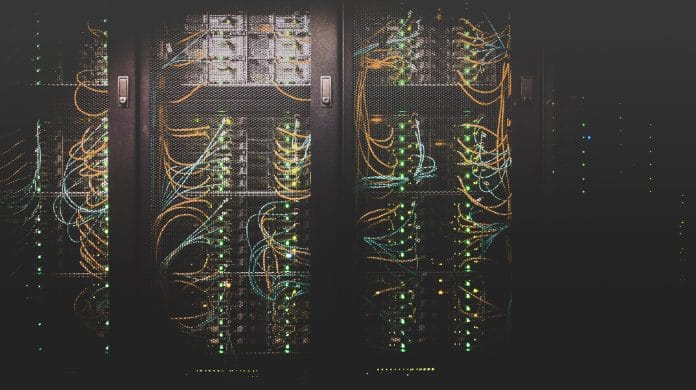
By: Prof. Ts. Dr. Manjit Singh Sidhu Professor at the College of Computing and Informatics, Universiti Tenaga Nasional (UNITEN), Fellow of the British Computer Society, Chartered IT Professional, Fellow of the Malaysian Scientific Association, Senior IEEE member and Professional Technologist MBOT Malaysia
The environmental effect of the IT sector cannot be neglected in an era where technical developments are at the forefront of global growth. The energy consumption of data centers and electronic devices is increasing in tandem with the demand for digital services and goods. To address this difficulty, the idea of Clean and Green IT has arisen, stressing renewable and sustainable techniques to reduce the information technology sector’s environmental imprint.
The IT industry, while fuelling innovation and connectivity, has long been associated with significant energy consumption and electronic waste generation. Traditional data centres, often powered by non-renewable sources, contribute to carbon emissions and environmental degradation. The production and disposal of electronic devices also pose environmental threats due to the extraction of rare minerals and the improper disposal of electronic waste.
The move to renewable energy sources is a crucial pillar of renewable and Green IT. Many foresighted businesses are expanding their investments in renewable energy to power their data centres and operations. Sustainable energy sources such as solar, wind, hydro, and geothermal energy are being used to lower the carbon footprint of IT infrastructure.
Google, for example, has pledged to using 100% renewable energy, which they accomplished in 2017. This dedication is not only in line with environmental sustainability, but it also acts as a model for other industry participants. Companies can play a critical role in reducing climate change and fostering a better future by emphasizing the use of sustainable energy.
Beyond utilising clean energy, enhancing the energy efficiency of data centres is paramount. Data centres are the backbone of the digital age, but they can be energy-intensive. Innovations in cooling technologies, server design, and data centre architecture contribute to reducing energy consumption. Techniques like liquid cooling and advanced airflow management have proven effective in optimising energy usage, ensuring that resources are used efficiently.
The concept of “server virtualisation” is another strategy employed to maximise the efficiency of data centres. This involves running multiple virtual machines on a single physical server, minimising idle time and energy wastage. These energy-efficient practices not only reduce operational costs but also promote a sustainable approach to IT infrastructure.
Clean and Green IT extends beyond operational aspects to encompass the entire lifecycle of electronic devices. Sustainable manufacturing processes, emphasising the use of recycled materials and minimising waste, are crucial in reducing the environmental impact of IT hardware. Companies are increasingly adopting circular economy principles, designing products that are easy to repair, upgrade, and recycle.
Apple, for instance, has committed to a goal of making its products from 100% recycled or renewable materials. This approach not only addresses resource scarcity but also reduces the carbon footprint associated with the production of new devices. Extended producer responsibility (EPR) initiatives, which make manufacturers responsible for the entire lifecycle of their products, are gaining traction, encouraging responsible disposal and recycling.
The rapid pace of technological innovation often leads to the premature disposal of electronic devices, contributing to the growing problem of electronic waste (e-waste). Clean and Green IT emphasises responsible e-waste management practices, including recycling and refurbishing electronic devices to extend their lifespan.
Governments and organisations worldwide are implementing regulations and programs to address the e-waste challenge. The recycling of valuable materials from old electronics not only conserves resources but also reduces the environmental impact of mining and extraction activities. Additionally, the proper disposal of hazardous materials in electronic devices prevents soil and water contamination.
Artificial Intelligence (AI) plays a pivotal role in optimising energy consumption and enhancing sustainability in the IT industry. Machine learning algorithms can analyse and predict energy usage patterns in data centres, enabling proactive measures to reduce energy waste. Smart building management systems, powered by AI, can optimise lighting, heating, and cooling in office spaces, contributing to overall energy efficiency.
Furthermore, AI applications are being employed in precision agriculture, energy grid management, and transportation systems to optimise resource usage and reduce environmental impact. As AI continues to advance, its integration into various facets of the IT sector holds the potential to revolutionise sustainability practices and drive further innovations in Clean and Green IT.
To accelerate the adoption of Clean and Green IT practices, governments and international organisations are implementing policies and standards. Incentives for companies that prioritise renewable energy, tax benefits for sustainable practices, and stringent regulations on e-waste disposal are among the measures being taken globally.
Industry standards, such as the Electronic Product Environmental Assessment Tool (EPEAT) and Leadership in Energy and Environmental Design (LEED) certification, provide guidelines for companies to assess and improve the environmental performance of their IT products and facilities. Adhering to these standards not only demonstrates a commitment to sustainability but also helps build a positive brand image.
While the adoption of Clean and Green IT practices is gaining momentum, challenges persist. The initial investment required for renewable energy infrastructure, resistance to change in traditional business models, and the complexity of implementing sustainable practices across global supply chains are among the hurdles faced by the industry.
However, the long-term benefits of Clean and Green IT far outweigh the challenges. Beyond environmental stewardship, companies embracing sustainable practices often experience improved operational efficiency, cost savings, and enhanced brand reputation. As technological advancements continue, the integration of innovative solutions and the collective commitment of the IT industry are essential for a sustainable and greener future.
Clean and Green IT represents a paradigm shift in the way the information technology sector approaches environmental responsibility. By prioritizing renewable energy, improving energy efficiency, adopting sustainable manufacturing practices, and managing electronic waste responsibly, the IT industry can mitigate its impact on the environment.
As consumers become increasingly environmentally conscious, the demand for Clean and Green IT solutions is likely to grow. Embracing these practices is not just a moral imperative but also a strategic move that positions companies at the forefront of a sustainable and resilient future. Through collaboration, innovation, and a commitment to responsible business practices, the IT industry can lead the way in building a cleaner and greener world.









